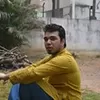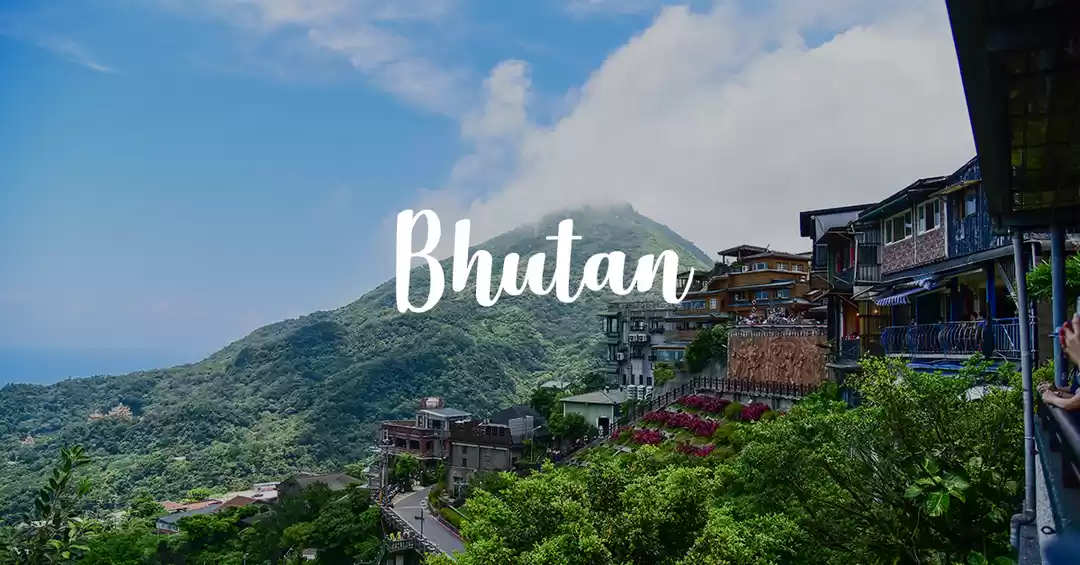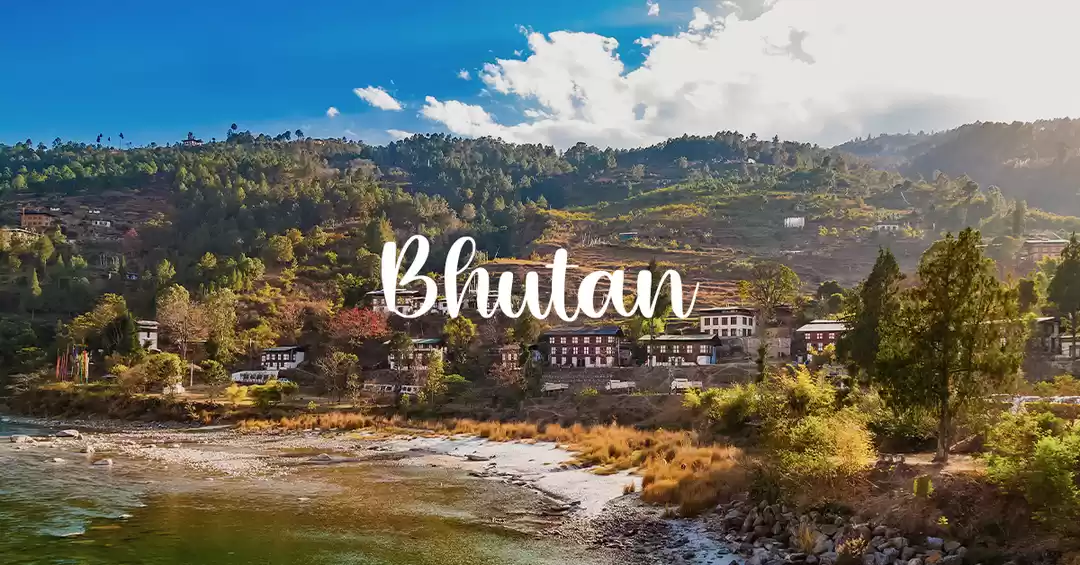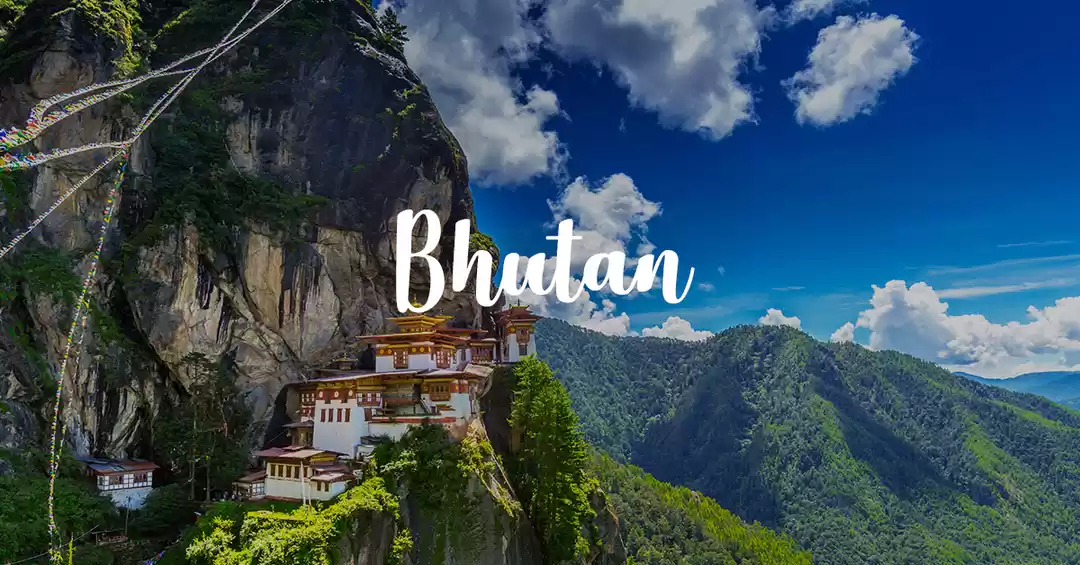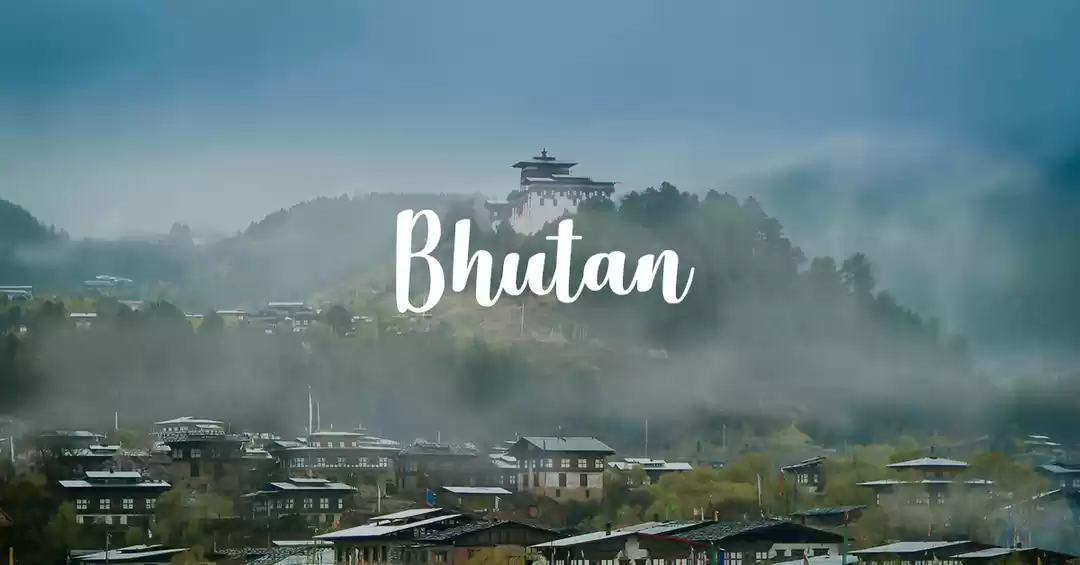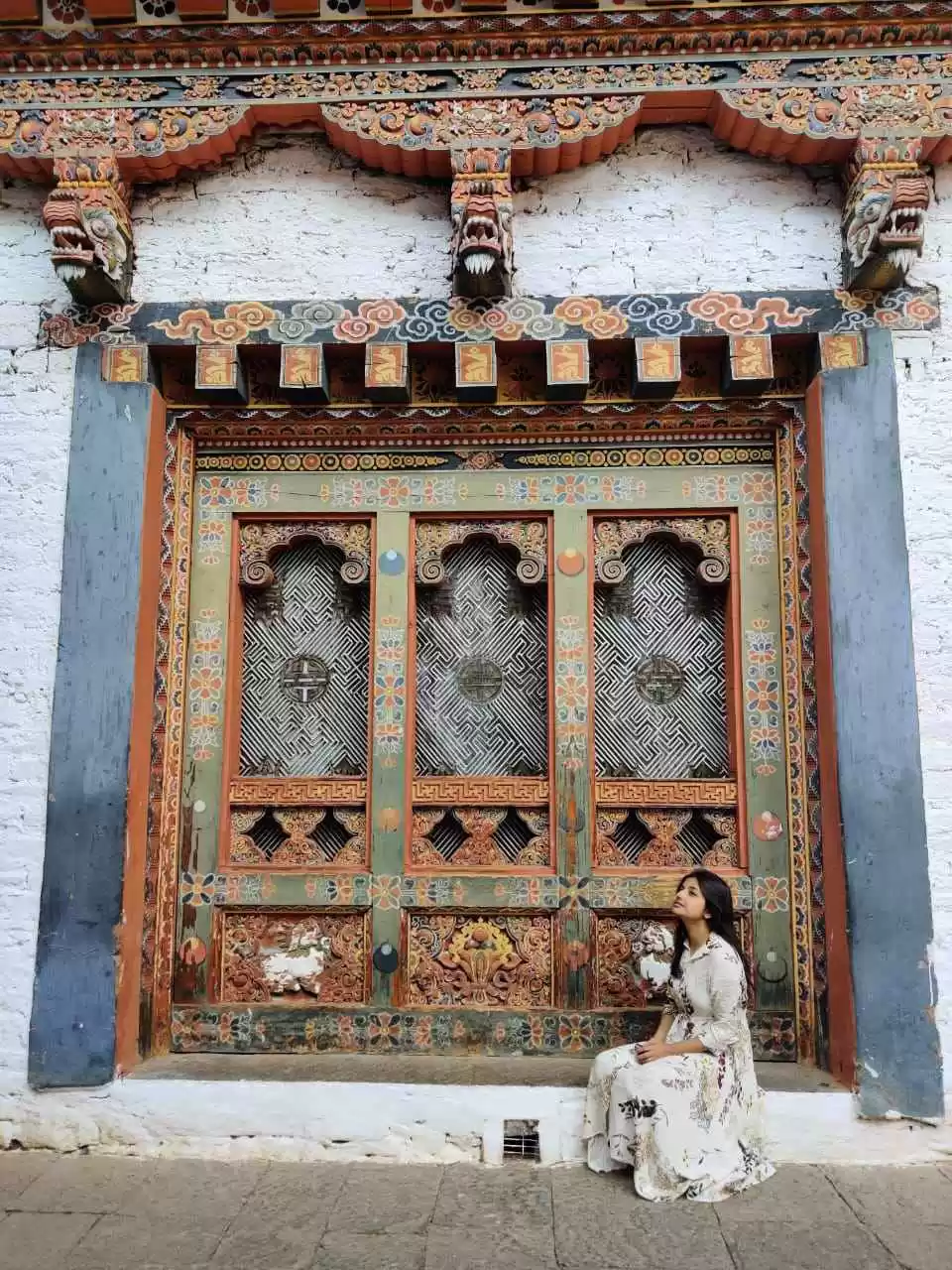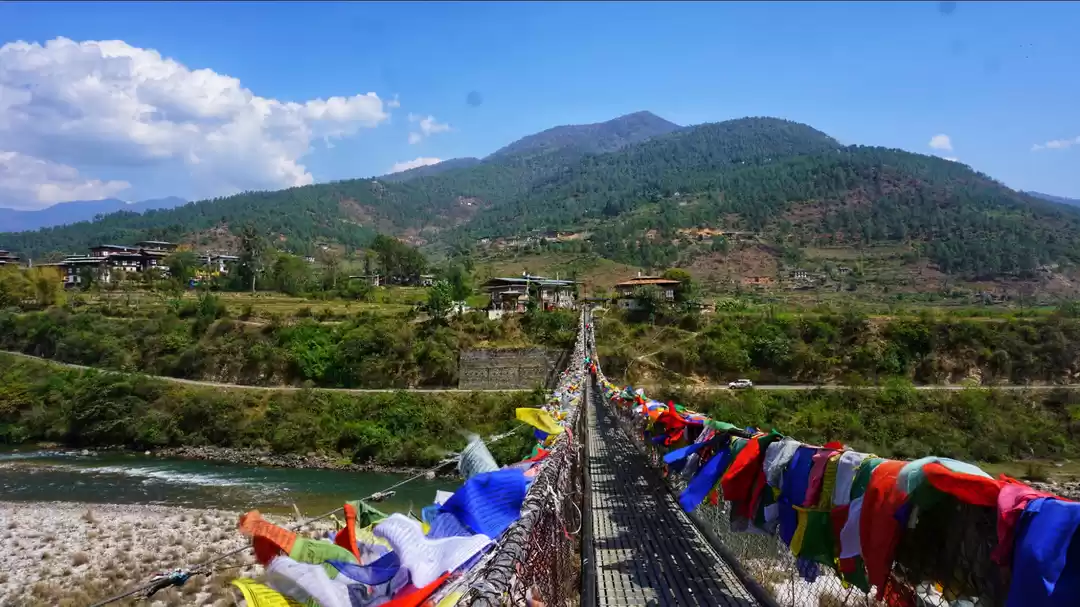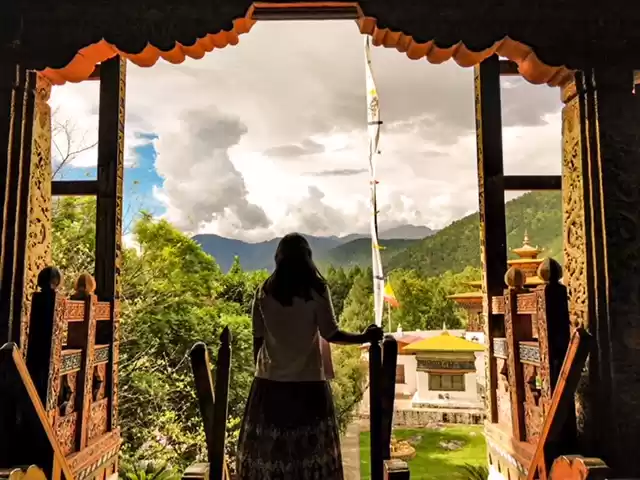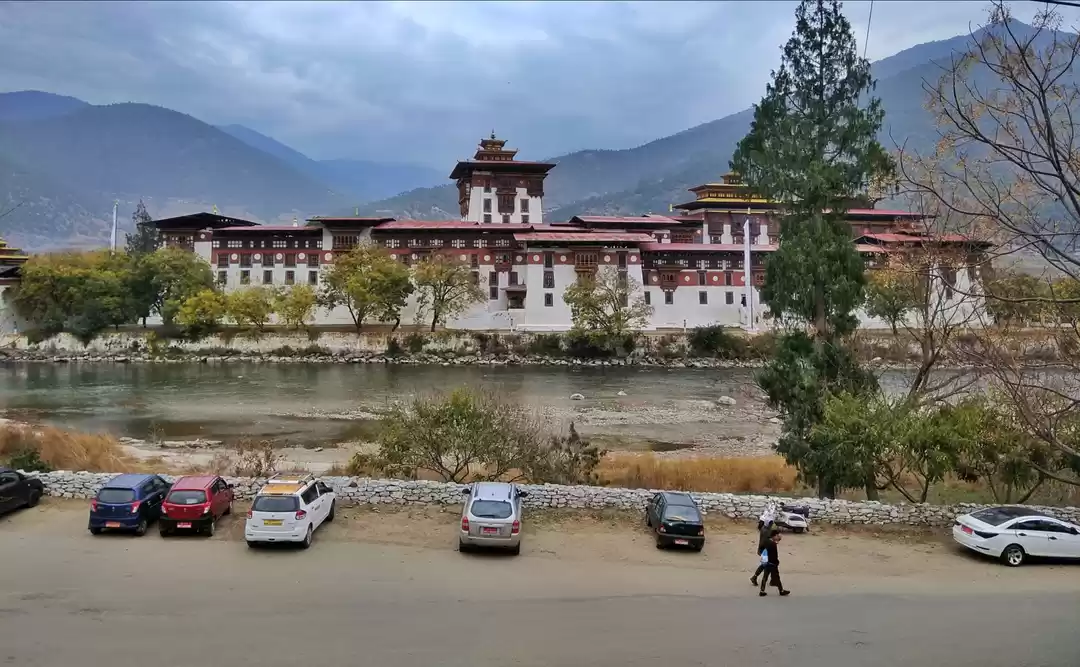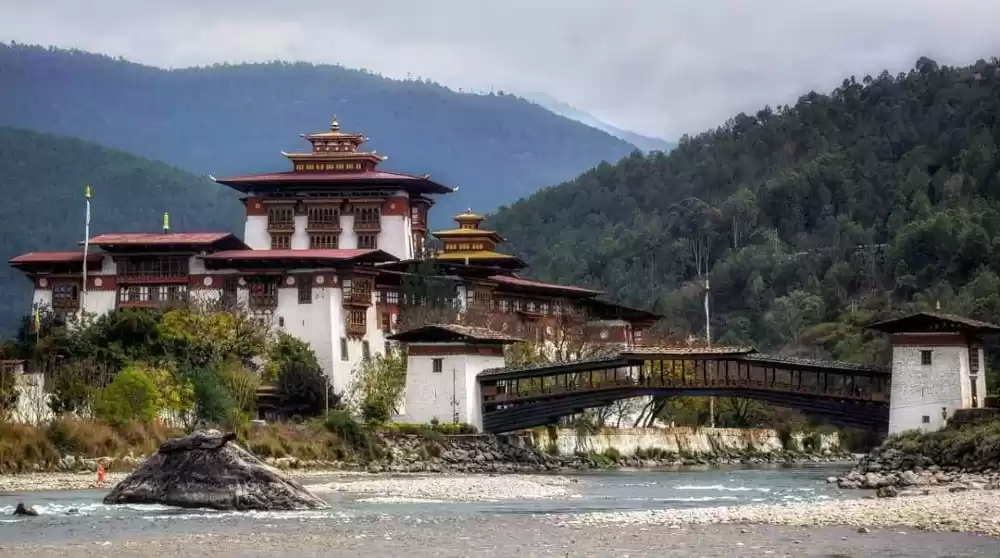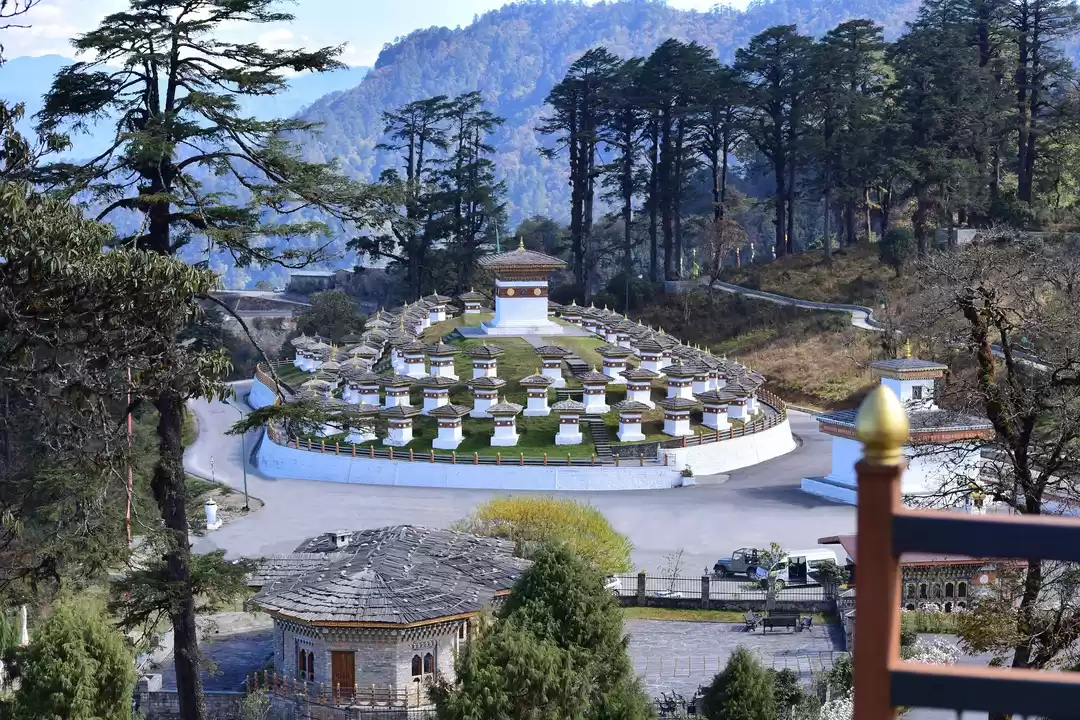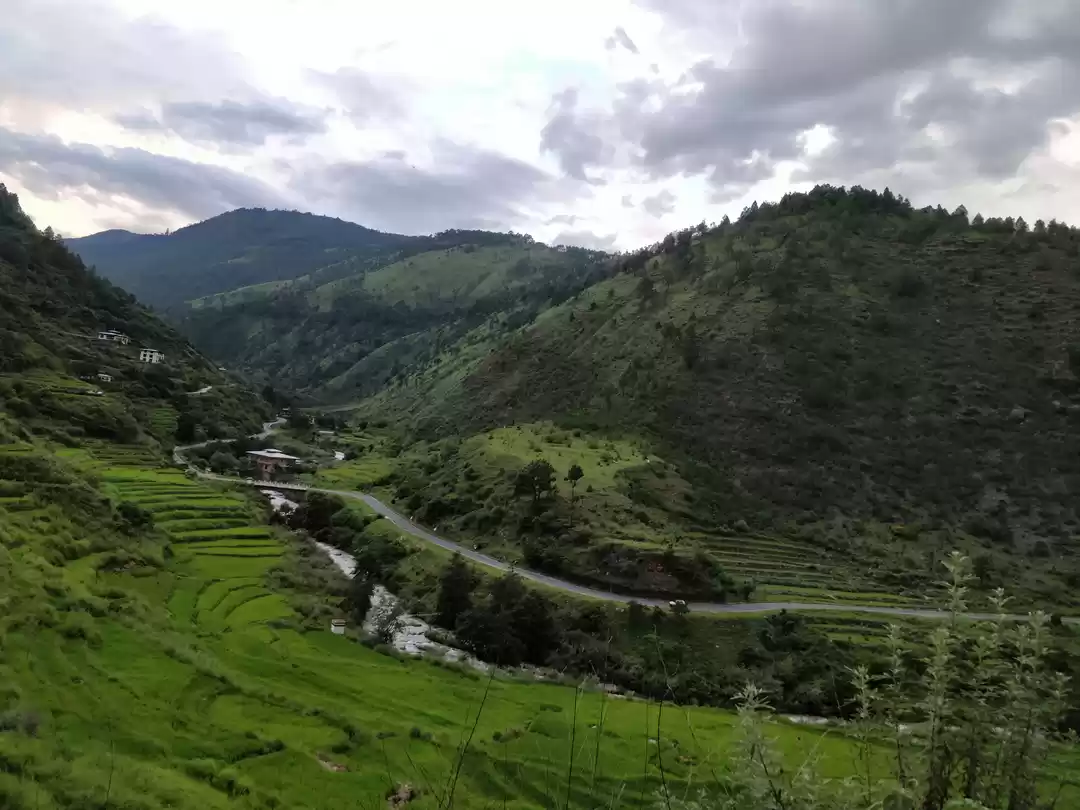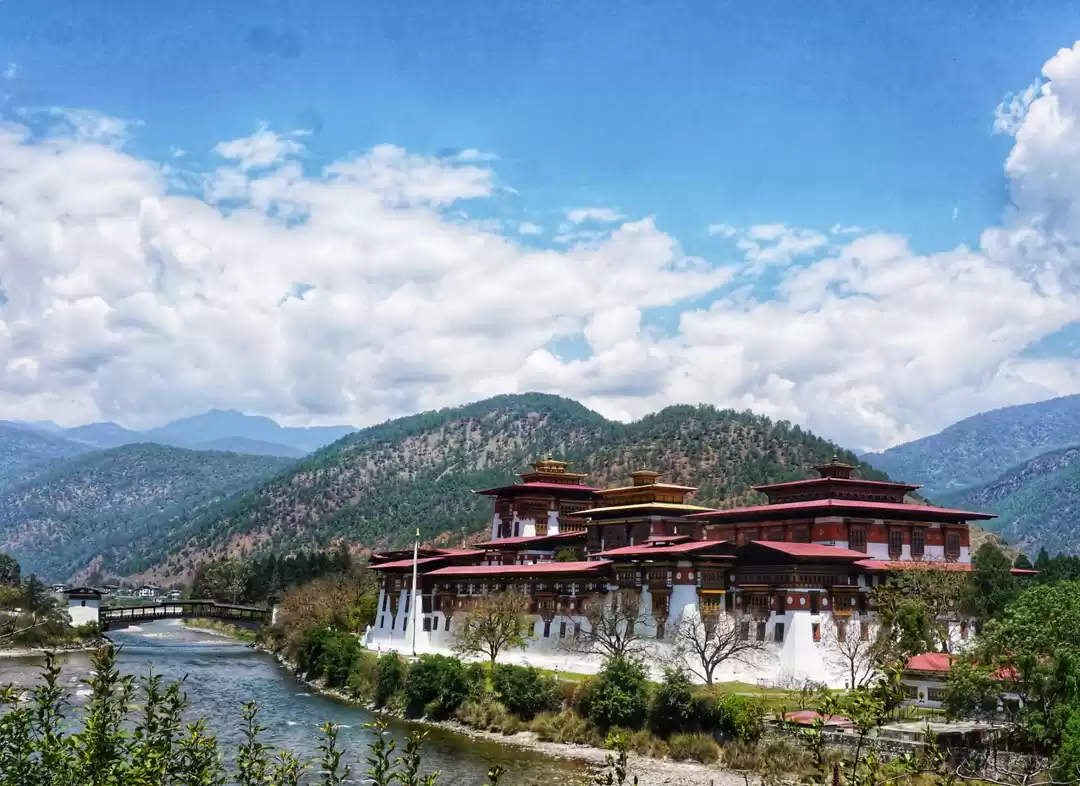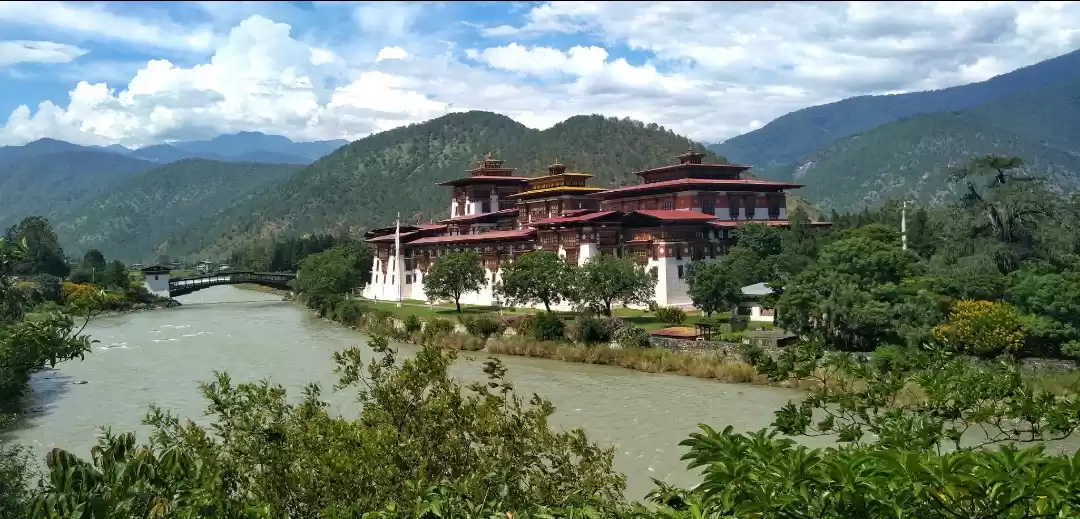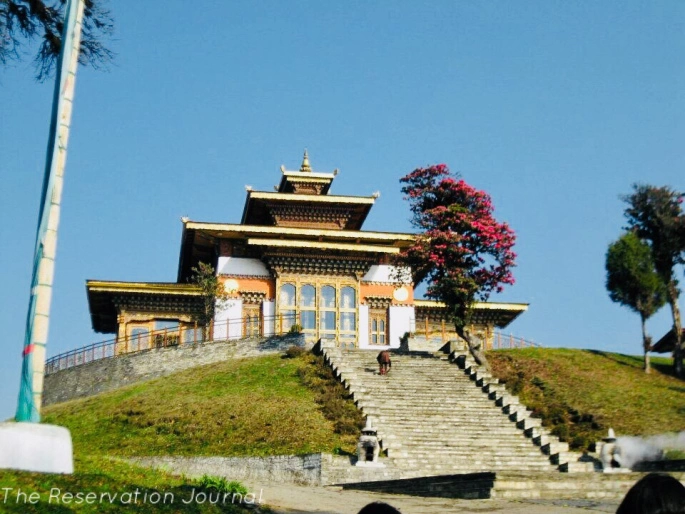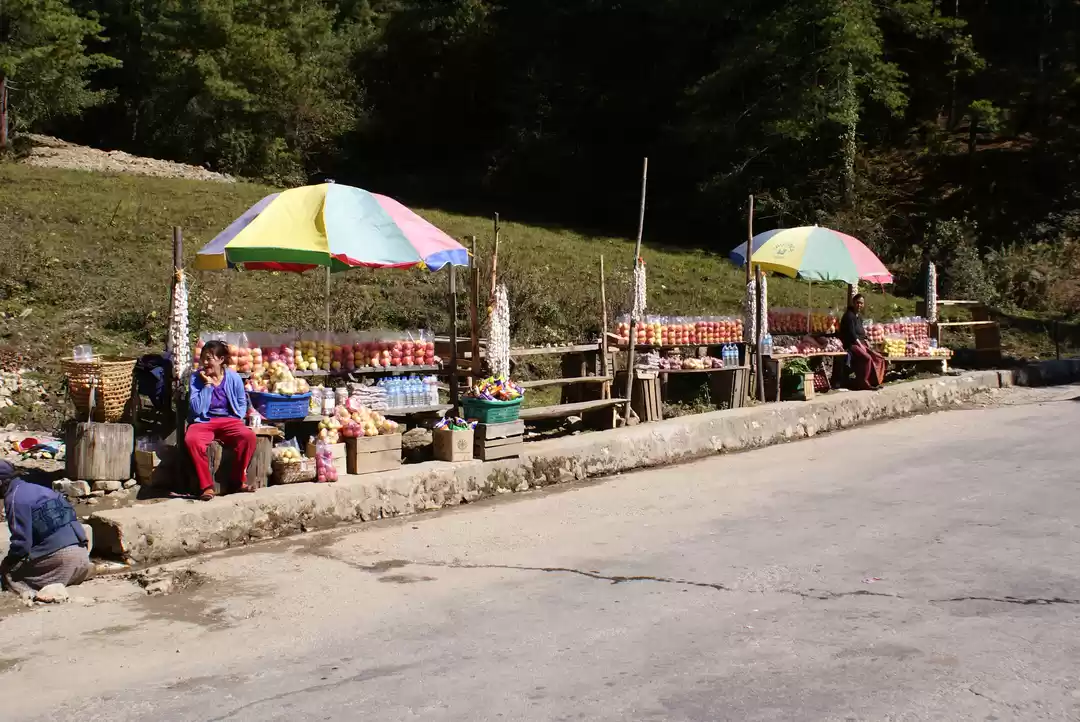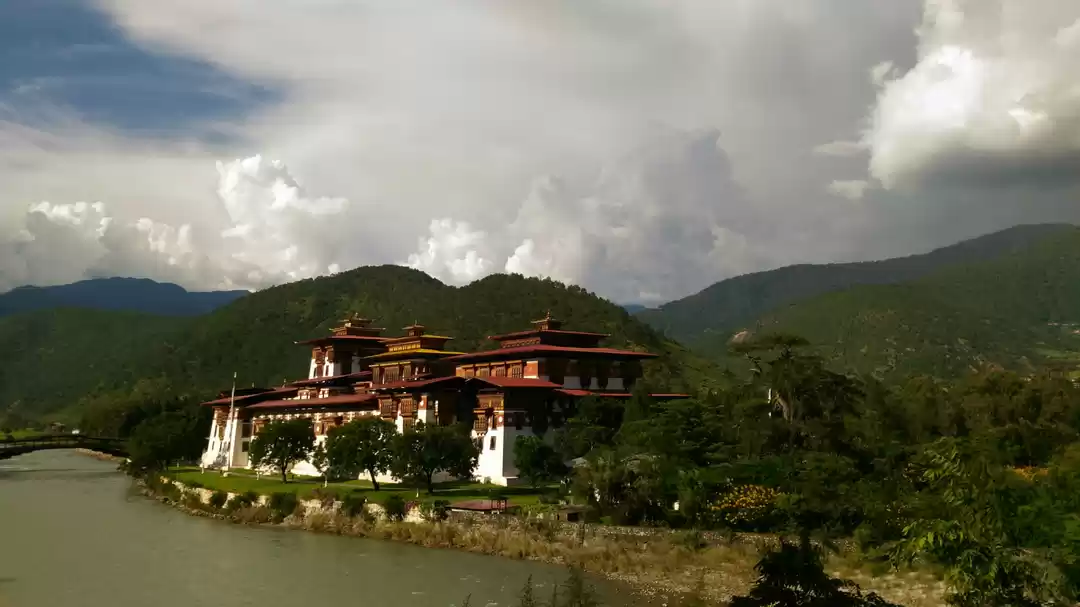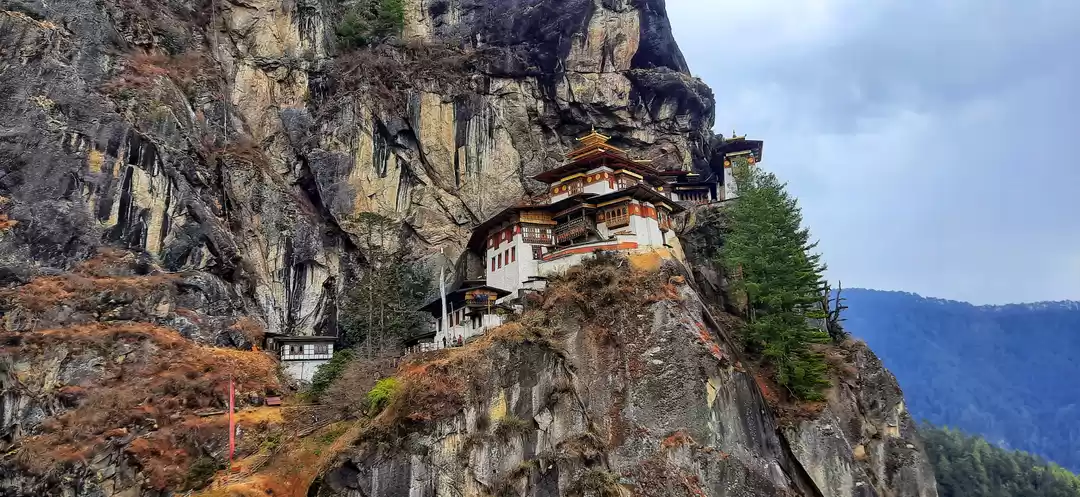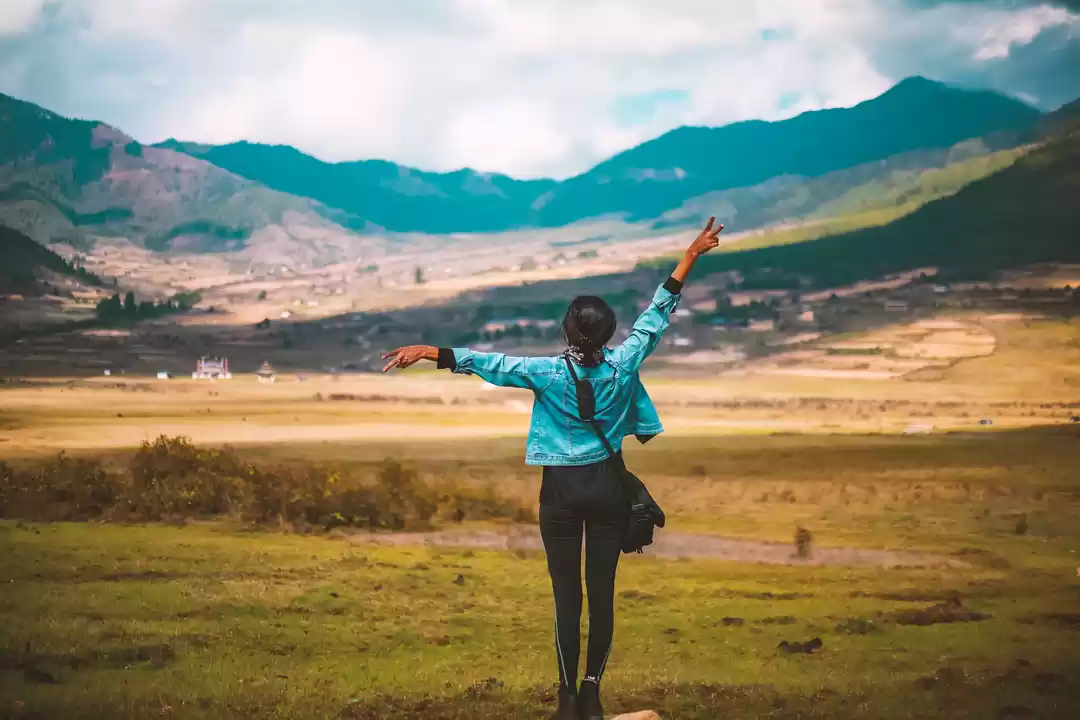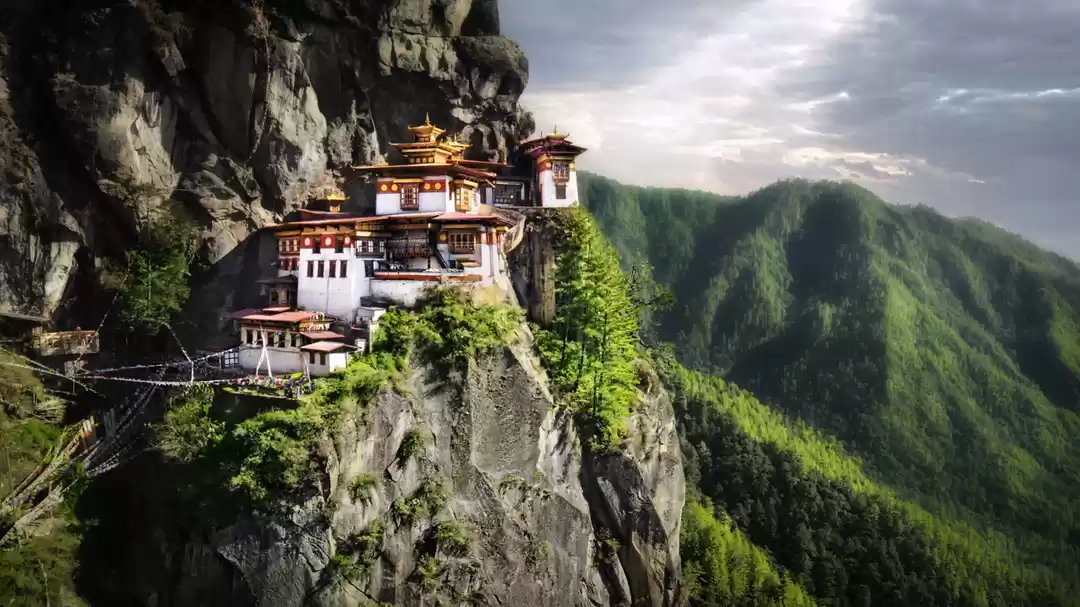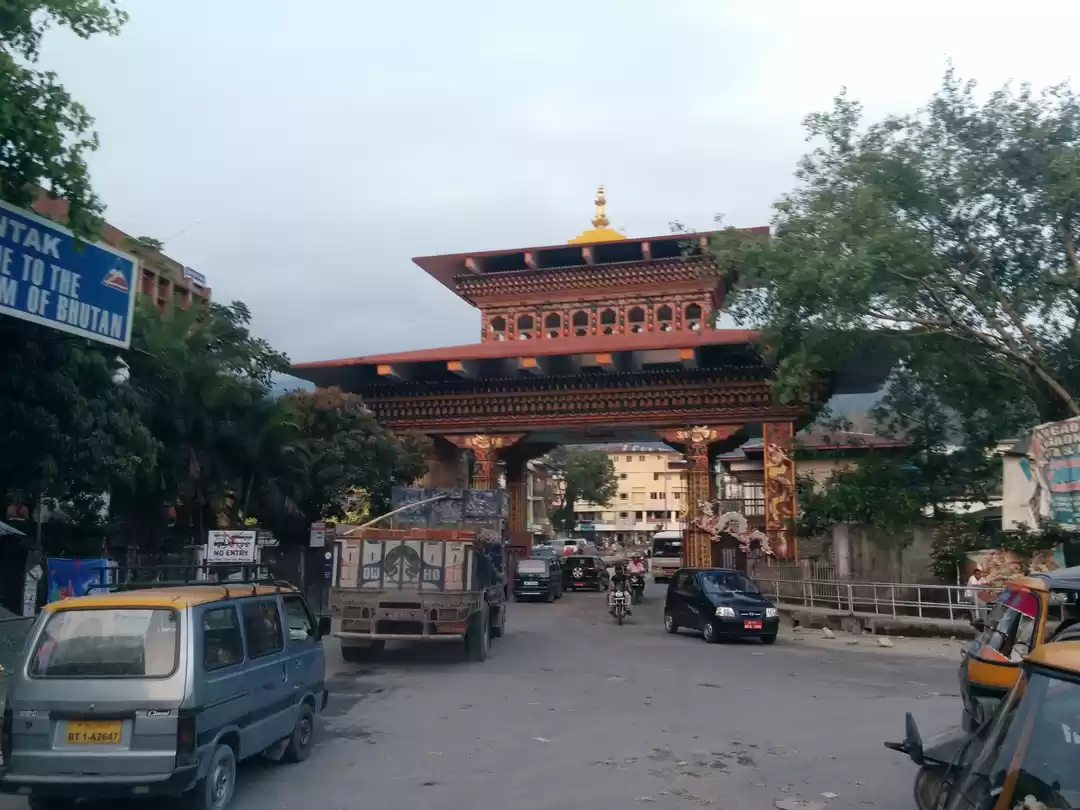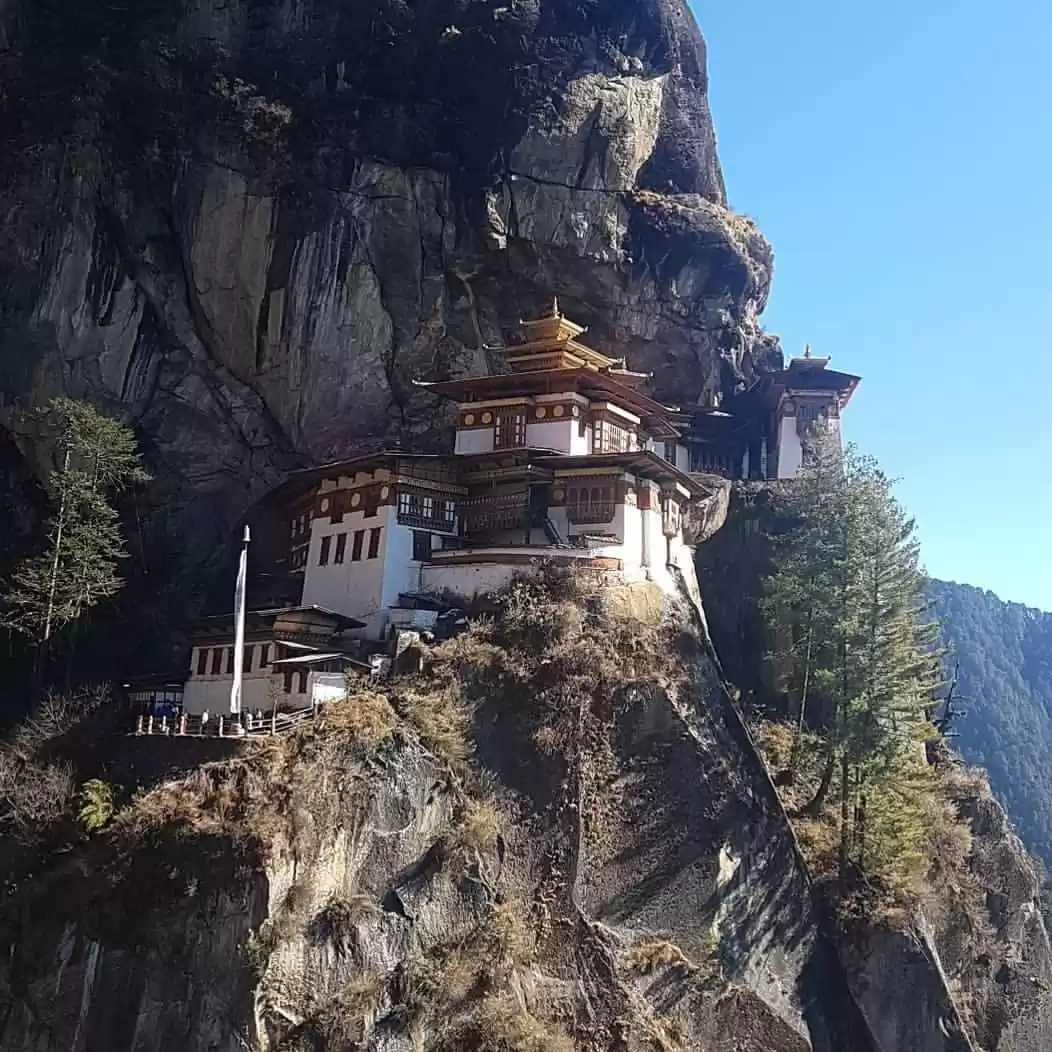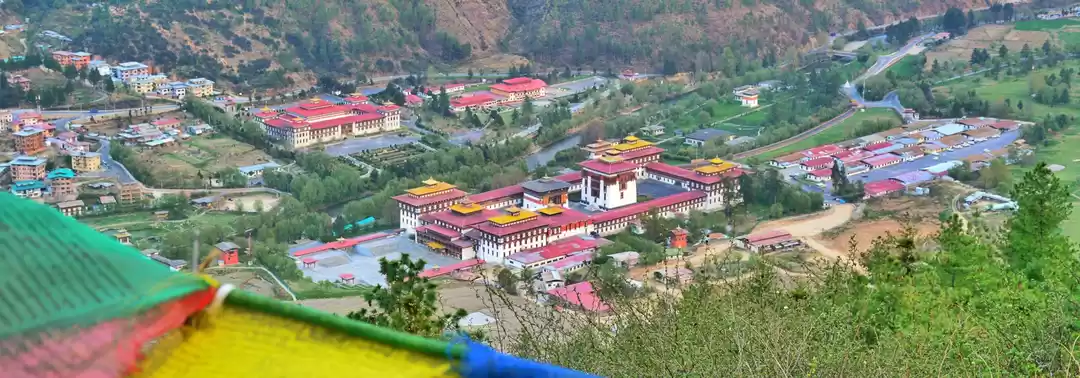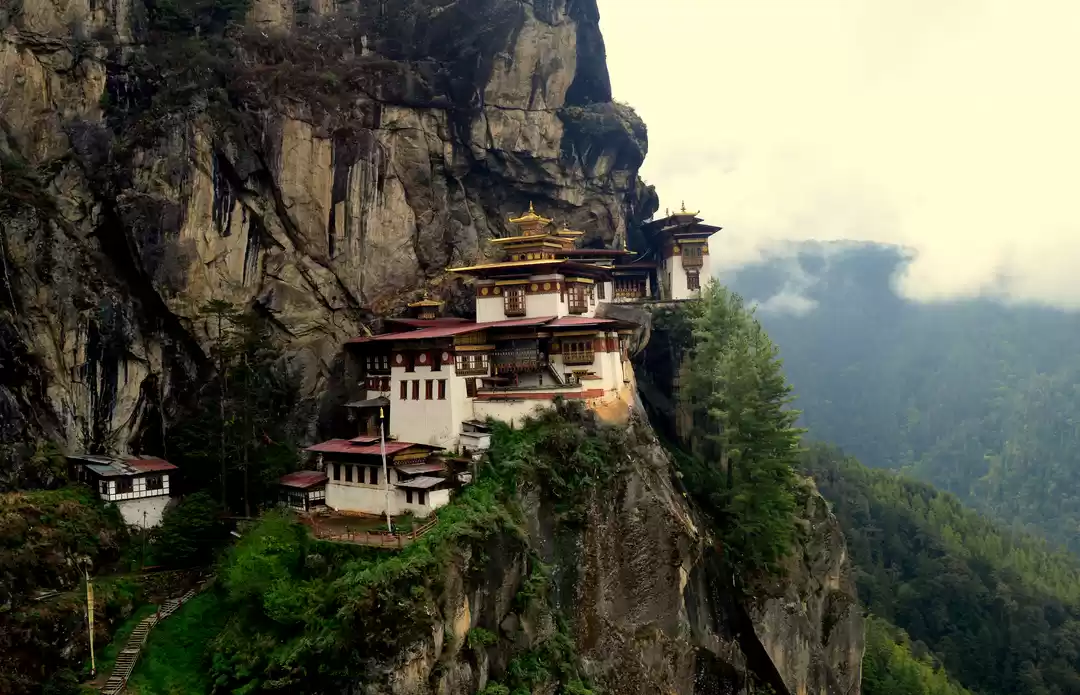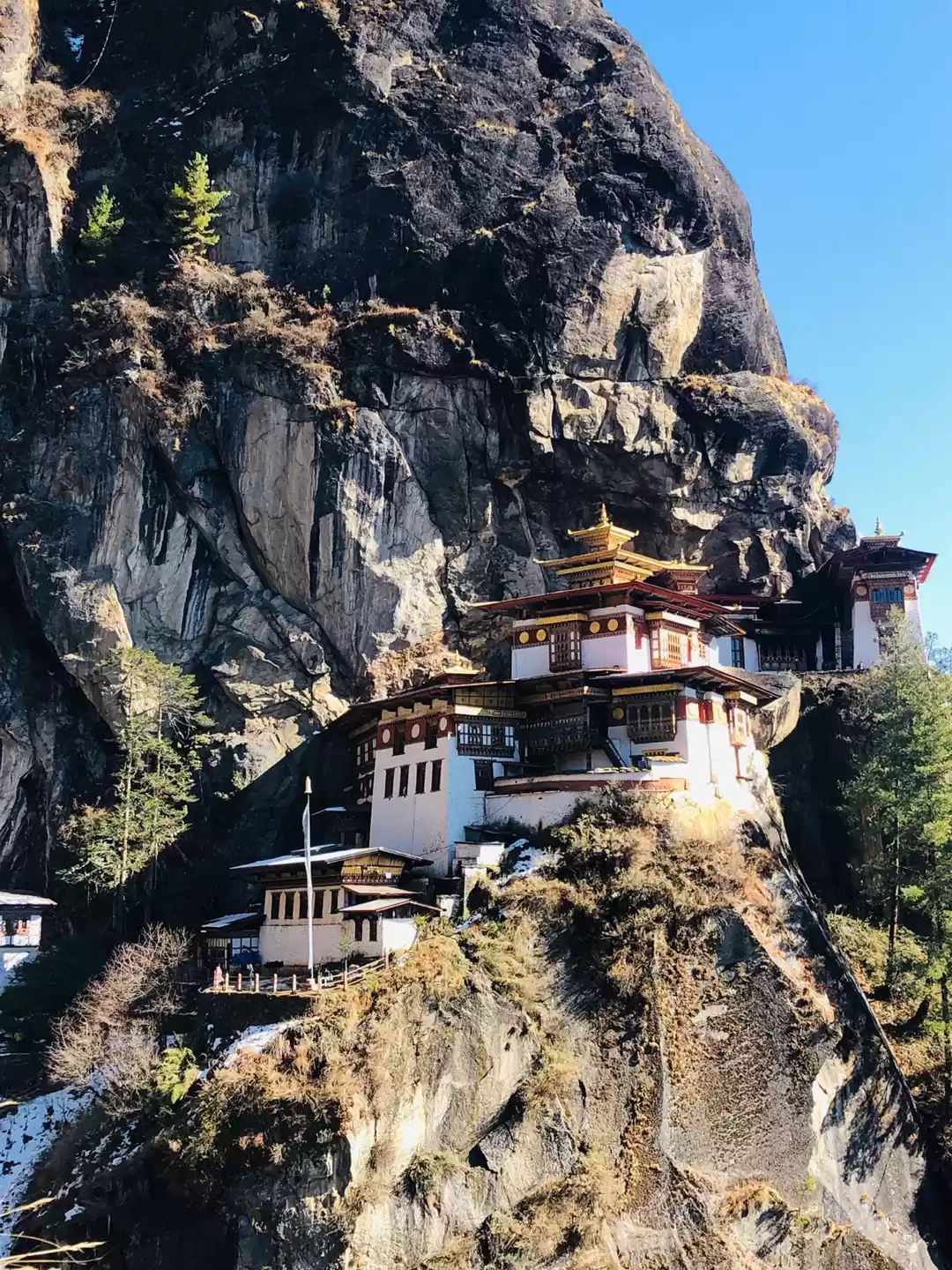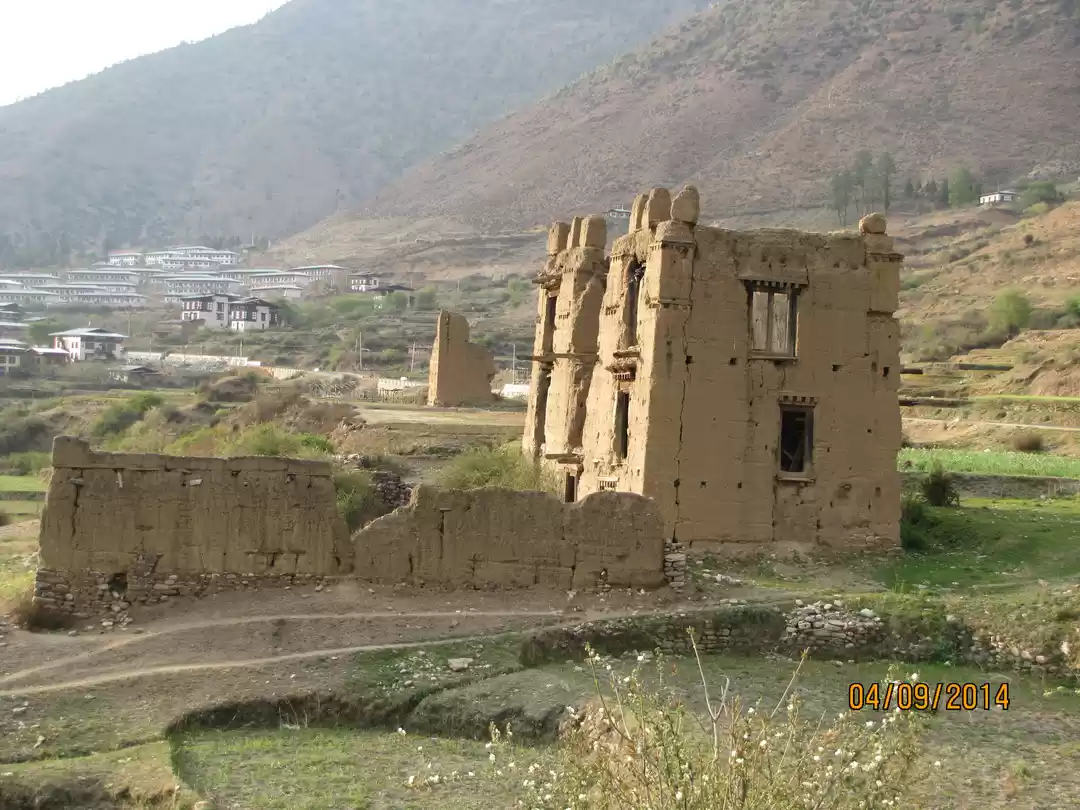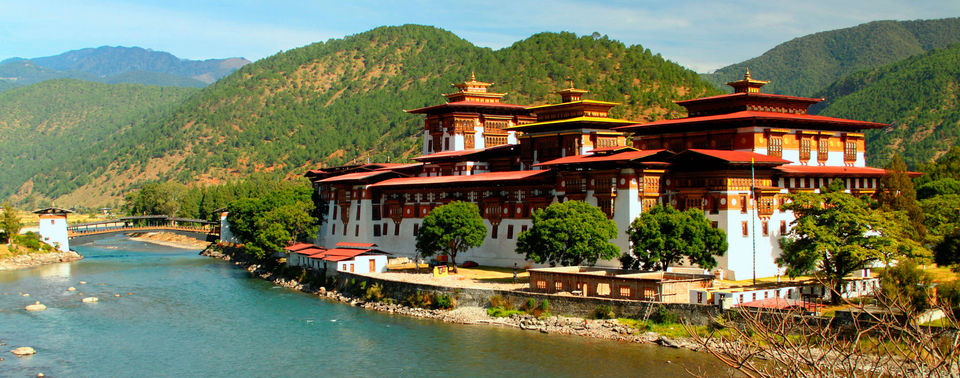
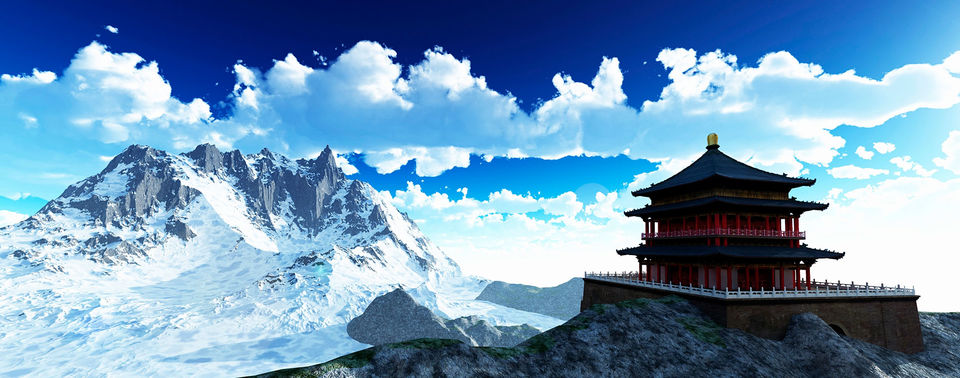








Taktshang Goemba or the Tiger's Nest The Taktshang Goemba (which translates as Tiger's Nest Monastery) is the most famous of Bhutan's monasteries. The most amazing think about this Monastery is, it is miraculously perched on the side of a sheer cliff 900m above the floor of Paro valley. When you will visit it, in the depth of the silence of the valley, only sounds are the murmurs of wind and water and the creaking of the prayer wheels. According to the local folklore, it is said that Guru Rinpoche flew to the site of the monastery on the back of a tigress (a manifestation of his consort Yeshe Tsogyal) to subdue the local demon, Singey Samdrup and therefore its called Tiger's Nest. Neither we are guru, nor we know how to fly the tiger ! So to visit this beautiful mystical corner of the world, one has to Trek for 2 Hours from the parking space. The bottom from this Paro Valley is 700 meters (2,300 feet) which is a straight steep gorge from Paro Taktsang Monastery. There is a cafe located enroute the monastery. One can easily take a break and recharge oneself here with some refreshments before plunging henceforth. Try local food and please keep the trek plastic free!





Opening hours 9am-5pm It is said that, no trip to Bhutan is complete without visiting Bhutan's most impressive and well-known dzong-Paro Dzongkhag. At this place you may perhaps find the finest example of Bhutanese architecture. The massive buttressed walls that tower over the town are visible throughout the valley. Overall its a well preserved fortress & friendly place of interest. One can have a aerial view of Paro with beautiful valley & terraced farmland. An interesting side note: scenes from Bernardo Bertolucci's 1995 film Little Buddha were filmed here.

This is the most challenging trek in Bhutan and one of the longest in Himalayas. It is one of the top ranked trek when its globally compared with others. It is undertaken by only a handful of trekkers each season and accesses Lunana – the most remote region of Bhutan. The trek crosses eleven insanely high passes- over 4,500m that define the borders of Bhutan and Tibet. Savouring views of Chomolhari and Jichu Drake, one can follow trails through yak herders encampments and isolated farming settlements as one can prepare for trek to Lunana. Amid a constant backdrop of 7000m peaks you can discover a region of tiny Buddhist monasteries and secluded villages that are isolated from the rest of Bhutan for many months of the year. Length: 30 days total. 25 day trek. Max. Altitude: 17,320ft / 5280m You can also contact Canadian Himalayan Expeditions directly for more information.
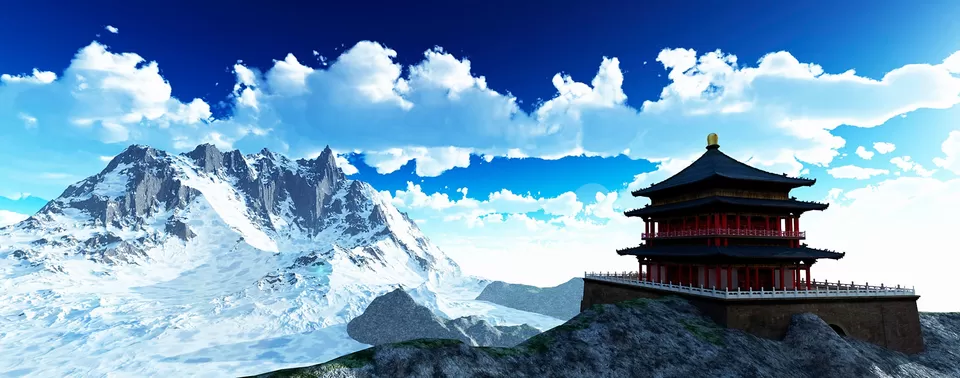


Punakha Its for people who wanna know Bhutan through its culture, through touching the lives of locals and living with them. The warm Punakha valley is the rice bowl of Bhutan. It is filled with terraced rice fields grown in an organic way employing traditional methods. Both red and white rice are grown along the rivers of Pho Chu and Mo Chu in the Punakha valley. There is an interesting temple called Chimi Lhakhang (the temple of fertility) amid rice fields at Sopsakha village. It was built in 1499 at a site blessed by saint Drukpa Kunley. He had an unorthodox way of teaching Buddhism. Today, women seek blessings for children there and are blessed by the lama with an ivory and wooden phallus. Twelve km from Punakha town one comes across the suspension bridge in Mitesgang and could trek through green fields and climb uphill to Guru Rinpoche caves (Geon Tsephu) that has a small temple. On his retreat from Nepal it is here he saw the Buddha of long life. The trekking takes two to three hours and the panoramic view around are spectacular.

This is perhaps one of the most popular treks in Bhutan. Mount jhomolhari means “mountain of the goddess” . With altitude differences of 2,500m and nearly 5,000m (lowest and highest point of the route), this Bhutan Trek offers a wide range of landscape, fauna and flora. The highlight of this Bhutan trek is the spectacular view of Mount Jomolhari (“Bride of Kangchenjunga” which is famous for its northern face which juts abruptly from the highlands with a vertical relief of 2700m), from Jomolhari Basecamp, Jangothang, and sightings of the Blue Sheep, Tibeta snowcocks, Himalayan griffons amongst others. One should be reasonably physically fit to enjoy the majestic mountain views, endure thin air, serenity & the wilderness of the landscape while on the trek.

The weather was cool in Thimphu but it became colder as one go on ascent to Dochula Pass. At an elevation of 3,100m after a 12-km drive, you are in the lap of nature with snowy Himalayan ranges looming in the background. Even at noon it gets foggy, and chilly weather can deprive you of a clear view. But then its amazing feeling to stand in a valley filled with hills, cypress trees and thousands of fluttering flags all across you. The Buddhist belief that inscribed mantras in prayer flags will be transmitted across the land by the wind and spread goodness so even at the highest of the mountains , you can see colourful flags at every pass, valley, bridges and houses. Predominantly in five colours, they represent the five colours of the elements — blue (sky), white (clouds), red (fire), green (water) and yellow (earth). Isn't it amazing?



Haa Valley is a tourist delight and is filled with undulating plains and roads. A relatively new but must see destination in Bhutan, is popular for virgin beauty of nature. Along with scenic sights, you will also find some temples and fortresses around this valley. Lhakhang Karpo and Nagpo-the famous White and Black temples, Shekhar Drak-an unique temple, Tagchu Goemba-a100 year old temple and Dobji Dzong- a five storeyed fortress on a hilltop are the things that engage you in the valley.



Frequent searches leading to this page:-
Top Bhutan tour packages with price, Best places to visit in Bhutan in march, Best things to do in Bhutan, Weekend getaways from Bhutan, Weekend getaways near Bhutan, Weekend getaways in Bhutan, Romantic getaways in Bhutan

